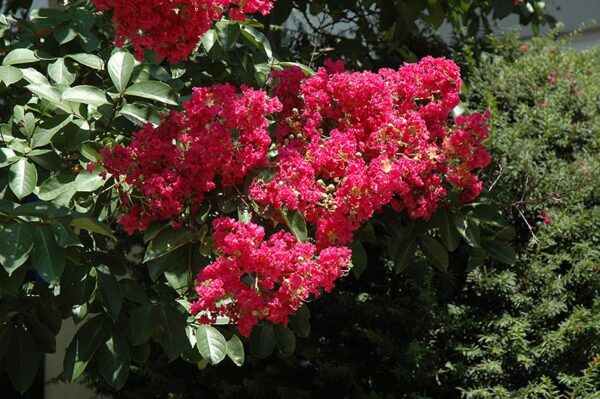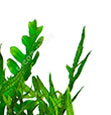Centennial Spirit Crapemyrtle
This stunning ornamental shrub or small tree produces volumes of red blooms in summer, followed by orange-red fall foliage; captivating focal point for the garden or border; also good for container planting.
Please contact your local store for product availability.
Find a garden center near you.
Species: indica
Other Species Names: Crapemyrtle, Crepemyrtle
Plant Height: 240 in.
Spread: 180 in.
Evergreen: No
Plant Form: upright spreading
Emergent Foliage Color: copper
Summer Foliage Color: dark green
Minimum Sunlight: partial shade
Maximum Sunlight: full sun
Centennial Spirit Crapemyrtle is bathed in stunning panicles of red frilly flowers at the ends of the branches from early to late summer. It has attractive dark green foliage which emerges coppery-bronze in spring. The oval leaves are highly ornamental and turn orange in fall. The fruit is not ornamentally significant.
Centennial Spirit Crapemyrtle is a dense multi-stemmed deciduous tree with an upright spreading habit of growth. Its relatively fine texture sets it apart from other landscape plants with less refined foliage.This is a relatively low maintenance tree, and is best pruned in late winter once the threat of extreme cold has passed. It has no significant negative characteristics.Centennial Spirit Crapemyrtle is recommended for the following landscape applications;AccentMass PlantingHedges/ScreeningGeneral Garden Use
Centennial Spirit Crapemyrtle will grow to be about 20 feet tall at maturity, with a spread of 15 feet. It has a low canopy with a typical clearance of 3 feet from the ground, and is suitable for planting under power lines. It grows at a fast rate, and under ideal conditions can be expected to live for approximately 20 years.This tree does best in full sun to partial shade. It prefers to grow in average to moist conditions, and shouldn't be allowed to dry out. It is very fussy about its soil conditions and must have rich, acidic soils to ensure success, and is subject to chlorosis (yellowing) of the leaves in alkaline soils. It is highly tolerant of urban pollution and will even thrive in inner city environments. This is a selected variety of a species not originally from North America.



